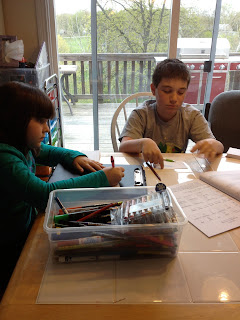
Se pueden clasificar los tacos de muy diferentes maneras, una de ellas es por el tipo de carne con que se hacen. La base de los tacos son las características tortillas de harina o maíz mexicanas que envuelven el relleno, que suele contener siempre carne de res o de cerdo.Se pueden hacer pupusas de queso, de frijoles y muchos otros sabores. Son básicamente una tortilla, pero la diferencia es que en su interior se les agregan otros ingredientes que le dan un sabor único. Para elaborar las pupusas primeramente se necesita una masa, que en El Salvador es elaborada por lo general de maíz molido.El relleno puede incluir carnes rojas o blancas, pescado, verduras o fruta. Una empanada es masa de pan rellena con una preparación salada o dulce y cocida al horno o frita.

En Centroamérica incluye pescado adobado en jugo de limón, sal, pimienta negra, cebollas, cilantro, chiles y ajo finamente picados. Next, we show you a very simple menu with the names of some dishes in Spanish: Sometimes, restaurants will have their menu (El menú) in both English and Spanish, which offers learners a great opportunity to practice this topic in a more realistic context. As with all menus, they include prices (precios), a few or many dishes, and of course some special offers. Some essential nouns to have a conversation at a restaurant are: “ mesa” (table), “reservación”, “comida”(food), “ plato principal” (main dish), “ entrada” (appetizer) and “postre” (dessert). “El filete está delicioso” and “ La comida es sabrosa en ese lugar”. Sentences describing food in Spanish will make use of the verbs SER and ESTAR, e.g. Besides some greetings, you will need many other expressions, which will be presented next in three different sections: Describing food and a restaurant’s menu in Spanishįirst, it is very important to use the right adjectives to describe food, that is words such as “Delicioso”, “Sabroso” (delicious), “Feo” (not delicious in this case), “picante” (spicy), “dulce”(sweet) and “salado” (salty), among many others. When you are in the restaurant, the first words you will need are greetings and farewells like “Hola” and “Mucho gusto”.

Let’s start… Common questions and phrases at the restaurant in Spanish

In addition, this lesson will introduce the names of some popular Latin American dishes in Spanish. We have included many examples about food descriptions, ways to ask the waiter for the specialties of the house, ways to make reservations and more. ¡Hola! Today’s lesson aims at helping you learn the vocabulary, phrases and questions that you need to order your favorite food at a restaurant in Spanish.


 0 kommentar(er)
0 kommentar(er)
